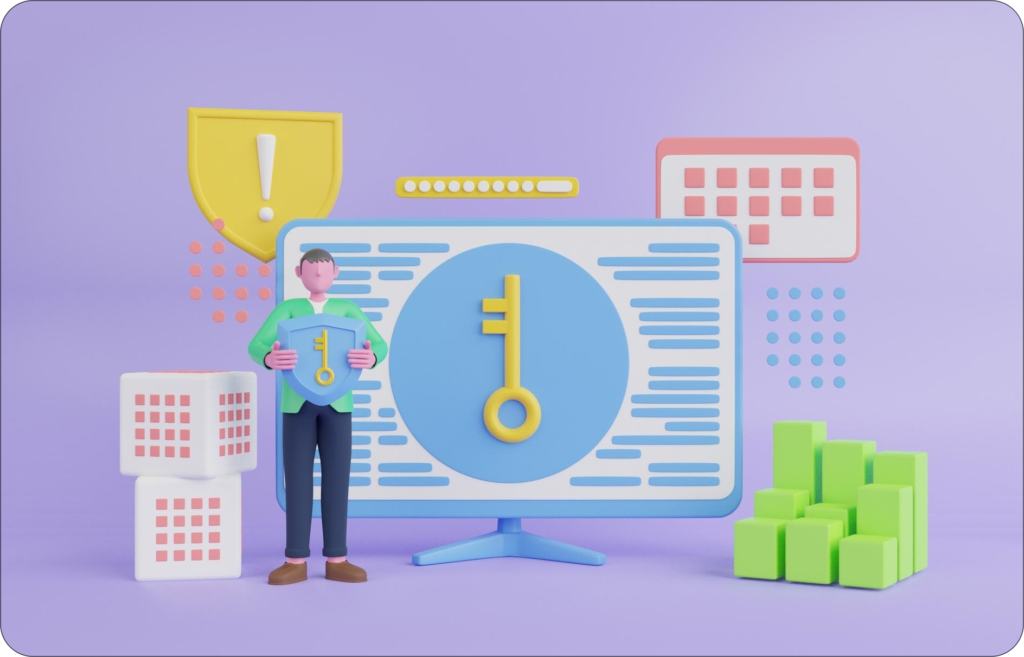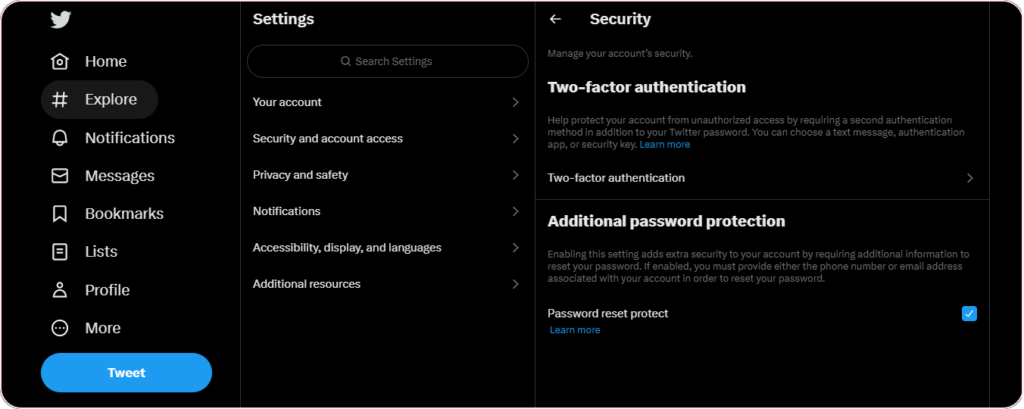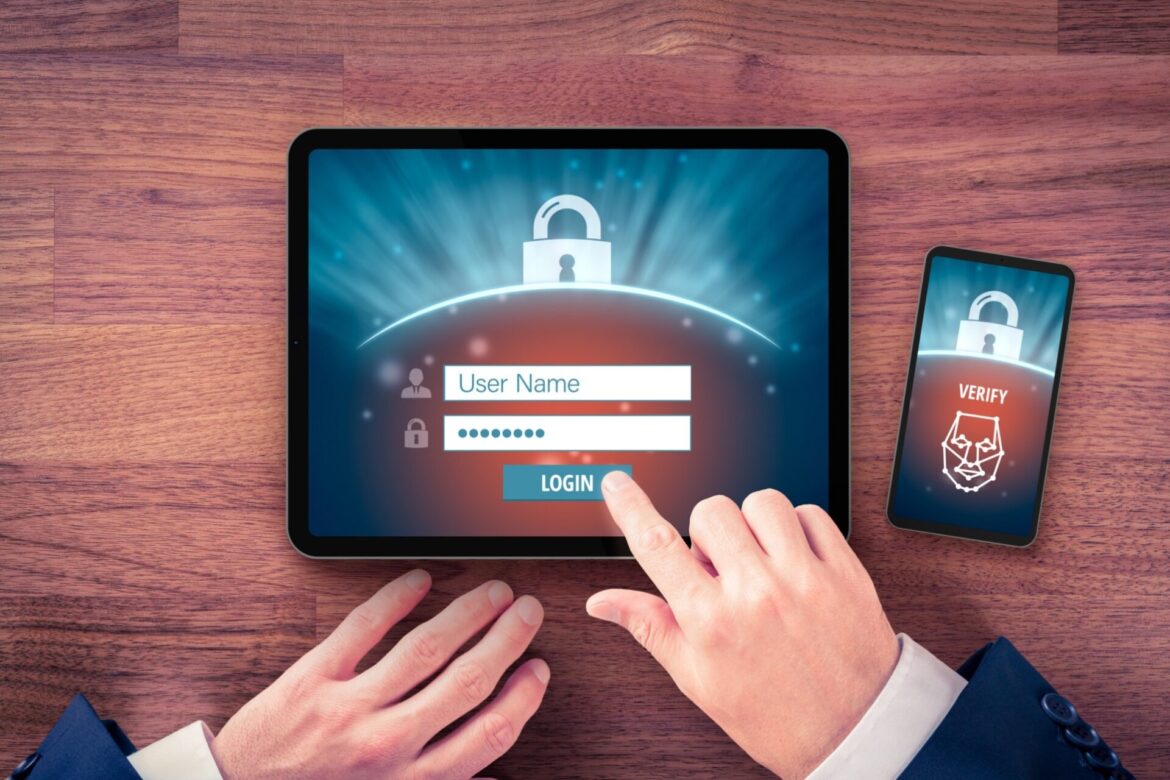Multi-factor authentication (MFA) is a security measure that requires users to verify their identity using multiple methods or factors before accessing an account or system.
The idea behind Multi-Factor Authentication (MFA) is that it adds an extra layer of security beyond just a simple password. Instead of relying solely on something the user knows (like a password), MFA requires something the user has (like a smartphone or a security token) or something the user is (like a fingerprint or face recognition).
For example, when you log in to your bank or social media account, and if the MFA was enabled, you might be asked to enter your password as usual and then also provide a unique code sent to your phone or generated by a security app.
This means that even if someone guesses or steals your password, they still won’t be able to access your account without also having access to your phone or security token.
Previously, Multi-Factor Authentication (MFA) systems were commonly referred to as Two-Factor Authentication (2FA) systems. However, nowadays, the term MFA is used more broadly to describe any authentication process that requires the use of two or more identity credentials.
MFA is an important security measure that can help protect against unauthorized access and prevent data breaches. By requiring multiple factors for authentication, MFA makes it much more difficult for attackers to gain access to your accounts or systems.
How Does The Multi-Factor Authentication Work?
Multi-Factor Authentication (MFA) requires users to provide multiple forms of identification before they can access a system, application or service. Here is a step-by-step breakdown of how MFA works:
Step 1: User initiates the login process: The user initiates the login process by entering their username, email address or phone number, and password into the login screen of the account, application, or service they want to access.
Step 2: The system verifies the user’s identity: The system verifies the user’s identity using the login credentials provided. If the login credentials are correct, the system moves on to the next step.
Step 3: The system requests additional authentication: The system prompts the user to provide an additional form of authentication, such as a one-time password (OTP) sent to their phone via text message or a code generated by an authentication app on their smartphone.
Step 4: User provides additional authentication: The user provides the requested additional authentication, typically by entering the one-time code or authentication app-generated code into the system.
Step 5: The system grants access: Once the additional authentication has been verified, the system grants the user access to the application or service.
The additional authentication required in step 3 can take various forms, including:
- Something the user knows: A password or PIN.
- Something the user has: A smartphone or other device that can receive a text message or generate a code through an authentication app.
- Something the user is: Biometric authentication, such as a fingerprint or facial recognition.
MFA aims to provide an additional layer of security beyond the traditional username and password login method.
Various MFA Authentication Methods
There are various Multi-Factor Authentication (MFA) methods that require users to provide multiple forms of identification to access a system or service. Below we will discuss a few popular ones:
1. One-Time Password (OTP) Authentication
This method generates a unique code that can be used only once and expires shortly. OTP codes can be sent via text message, email or generated by an authentication app. For example, Google Authenticator or Microsoft Authenticator. The user enters the OTP code after their initial login, providing an additional layer of security.
2. Biometric Authentication
This method uses a unique physical characteristic of the user to verify their identities, such as a fingerprint or face recognition. For example, an iPhone user can set up Face ID, and the system will recognize the user’s face and grant access to the device.
3. Smart Card Authentication
This method uses a physical smart card that is inserted into a card reader to grant access to the system or application. The smart card contains an embedded microchip that stores digital certificates and other identification information. The user must provide a Personal Identification Number (PIN) to use the card.
4. Push Notification Authentication
This method sends a push notification to a user’s smartphone or tablet to verify their identity. The user confirms the notification to grant access to the system or application. For example, when logging into your Google account from your Computer, a push notification may be sent to the user’s phone asking them to confirm the login attempt.
5. Voice Recognition Authentication
This method uses the user’s voice as a unique identifier. The user is prompted to speak a specific phrase, and the system compares the voiceprint to a stored voiceprint to authenticate the user’s identity. For example, some financial institutions use voice recognition authentication to grant access to accounts over the phone.
6. Security Tokens
A security token is a physical device that generates a unique code, often called a One-Time Password (OTP). The user enters the OTP code after their initial login, providing an additional layer of security. Security tokens can be used as standalone devices or integrated into smartphones and other devices.
7. Knowledge-Based Authentication (KBA)
This method requires the user to answer questions based on personal information, such as their mother’s maiden name or favorite teacher in school. The questions are designed to be difficult for anyone but the user to answer.
8. Location-Based Authentication
This method uses the user’s location to verify their identity. For example, if a user logs in from a location far from their usual location, the system may prompt them to provide additional authentication before granting access.
9. Time-Based One-Time Password (TOTP) Authentication
This method generates a unique code valid for a limited time, typically 30 seconds. TOTP codes can be generated by an authentication app or sent via text. The user enters the TOTP code after their initial login, providing an additional layer of security.
10. Certificate-Based Authentication
This method uses a digital certificate to verify the identity of the user. A trusted third party, such as a Certificate Authority (CA), typically issues the certificate. To gain access, the user must present the digital certificate to the system or application.
These are just a few popular Multi-Factor Authentication (MFA) methods used today. The choice of authentication method will depend on the level of security required and the specific needs of the system or application being accessed.
Why is Multi-Factor Authentication Important?
In today’s digital world, where personal and sensitive information is being shared online more than ever, cybersecurity is of paramount importance.
Multi-Factor Authentication (MFA) is an essential security measure against unauthorized access to sensitive accounts and data.
MFA is necessary because it adds an additional layer of security to traditional username and password authentication. With traditional authentication, if someone gains access to your password, they can easily access your account and all the sensitive information stored within it.

However, with MFA, even if someone has your password, they cannot access your account without access to the additional authentication factor, such as a fingerprint, a smart card, or a one-time code.
MFA is important for everyone to protect their personal information, such as bank accounts, social media accounts, email accounts, etc.
By using MFA, individuals can significantly reduce the risk of their accounts being hacked and their sensitive information being exposed.
Is Multi-Factor Authentication Enabled By Default?
Multi-Factor Authentication (MFA) is not always enabled by default. In fact, many online services and applications still rely solely on a username and password for authentication, leaving them vulnerable to cyber-attacks and data breaches.
It is important to note that enabling MFA is typically a user’s responsibility. While some online services may prompt users to enable MFA during the initial account setup process, others may require users to enable MFA in their account settings manually.
For example, social media platforms like Facebook and Twitter allow users to enable MFA through their security settings.

Similarly, many online banking and financial services also offer MFA as an option for users to enable in their account settings.
What’s The Difference Between MFA and 2FA?
Multi-Factor Authentication (MFA) and Two-Factor Authentication (2FA) are methods for adding an extra layer of security to traditional username and password authentication, but they differ in the number of authentication factors required.
2FA requires two authentication factors, typically a password and a one-time code generated by a smartphone app or sent via text message.

MFA, on the other hand, requires two or more authentication factors, such as a password, a fingerprint, and a smart card.
Advantages of Multi-Factor Authentication
Multi-Factor Authentication (MFA) offers several advantages over traditional password-only authentication methods. Below are a few benefits of using MFA for your account or system:
- Improved Security: MFA provides an additional layer of security beyond just a password, making it much more difficult for cybercriminals to gain access to sensitive accounts and data.
- Reduces Risk of Data Breaches: By requiring multiple authentication factors, MFA can significantly reduce the risk of data breaches and other cyber attacks.
- Customizable: MFA can be customized to suit specific security requirements, with different authentication factors tailored to different access levels.
- User-Friendly: Many MFA methods are easy and convenient, with options such as biometric authentication, making it simple to access accounts without memorizing complex passwords.
- Compliance: Many industries and regulatory frameworks require MFA to comply with security standards and protect against unauthorized access to sensitive data.
- Peace of Mind: MFA provides users with the peace of mind that their accounts and data are secure, allowing them to focus on other important tasks without worrying about the risk of cyber attacks.
Disadvantages of Multi-Factor Authentication
While Multi-Factor Authentication (MFA) has many benefits, there are also some potential drawbacks. Below are some disadvantages associated with MFA:
- Dependence on Phones: MFA methods that rely on sending text message codes require users to have a phone, which can be a barrier for those who don’t have access to one or prefer not to use one.
- Risk of Phone Loss or Theft: If a phone is lost or stolen, it is inconvenient for the user and can also put their accounts at risk if MFA methods are stored on the device.
- False Positives: MFA can sometimes generate false positives, denying legitimate users access to their accounts and data, which can be frustrating and time-consuming to resolve.
- Dependence on Network and Internet: MFA verification requires connectivity to a network or the internet, which can fail due to outages or disruptions, preventing users from accessing their accounts.
